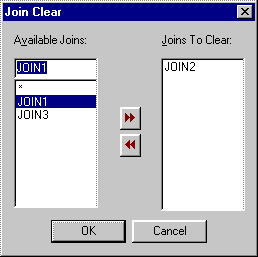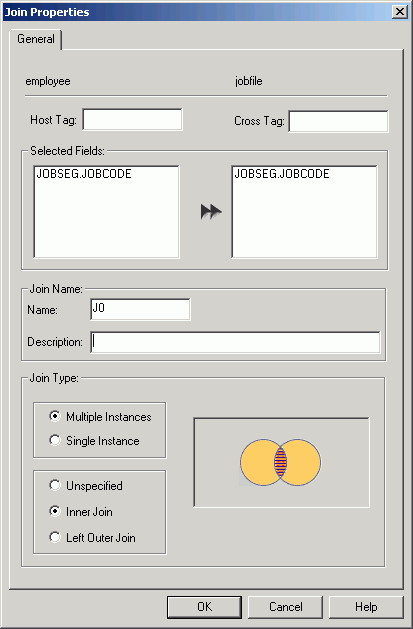Indicates the type of join. Choose from the following:
Multiple
Instance (Non-Unique). A one-to-many join structure that matches
one value in the host data source to multiple values in the cross-referenced
field. Joining employee ID in an employee data source to employee
ID in a data source that lists all the training classes offered
by that company would result in a listing of all courses taken by
each employee, or a joining of the one instance of each ID in the
host file to the multiple instances of that ID in the cross-referenced
file. This is the default selection.
Single Instance (Unique). A
one-to-one join structure that matches one value in the host data
source to one value in the cross-referenced data source. Joining an
employee ID in an employee data source to an employee ID in a salary
data source is an example of a unique join.
Unspecified. This
option is selected in the Join properties when a join that was created
in an earlier release is opened in the Join tool. In earlier versions,
the defaults for join type and other operators were assumed and
not specified in the generated code. Since the Join tool cannot
determine the type of join that was created and if there were other
commands set to control the join, select the appropriate options (Inner
Join, Left Outer Join, Multiple Instances, Single Instances) from
the Join tool to upgrade the generated code.
Inner Join. A
join that results when a report omits host rows that lack corresponding
cross-referenced rows.
Left Outer Join. Extends the
results of an Inner Join and retrieves records from both host and
cross-referenced tables, including all records from the left table (host)
and any records from the right table (cross-referenced) where the
condition values match. If there are no matching values in the cross-referenced
table, the join still retrieves records from the host table.

 button.
button.

